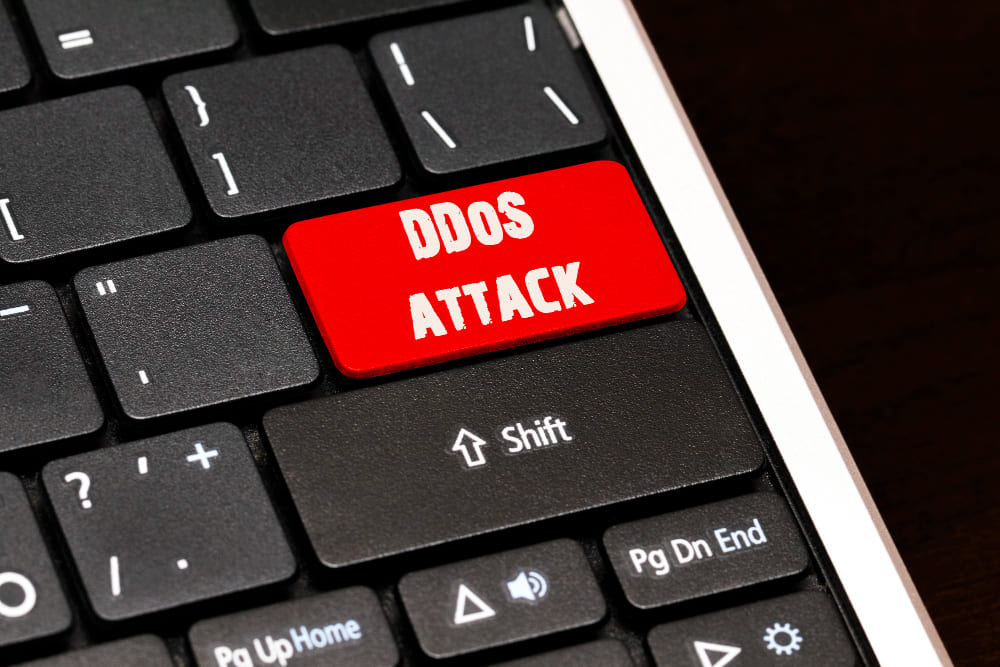If a company working with a sensitive IT infrastructure or handling valuable data were to experience a cyber incident, having a robust incident response plan in place is crucial. Cyber incident response is a proactive approach to preparing for and mitigating the impact of cyberattacks.
Mastering this strategy is a must for a company to ensure the safety of its data. So, if you’re wondering what cyber incident response is and want to learn more about it, keep following this article.
Let’s go!
What Is Cyber Incident Response?

Cyber incident response, also called Incident Response (IR), is a strategic method or blueprint for preparing a system to tackle cyberattacks. It aims to reduce the harm and damage caused by such attacks.
Incident response itself is a part of incident management, which is a general term in the business world for handling any circumstances involving stakeholders. So, imagine there are 2,200 cyber attacks per day, and without effective incident response strategies, businesses can suffer significant financial losses, reputation damage, and operational disruptions.
This is why cyber incident response also plays a crucial role in swiftly addressing the impact of unexpected events and ensuring a company’s sustainability.
Who Handles Incident Responses?

Incident response is usually managed by a team within an organization called the Computer Incident Response Team (CIRT) or Cyber Incident Response Team. This team consists of security and IT personnel, as well as members from legal, human resources, and public relations departments.
This computer security incident response team is responsible for identifying, suggesting, and coordinating immediate steps to contain, remove, and recover from computer security incidents; this includes handling security breaches, viruses, and other serious cyber incidents with significant security risks.
Types of Security Incidents

There are various types of security incidents that require proper incident response and cybersecurity plans. Keep reading to understand better several incidents that could target your system.
Denial-of-Service (DoS) Attack
Denial-of-Service (DoS) attack is the type of attack with the aim to disrupt how the network or system works by flooding it with traffic or requests. This makes the targeted system inaccessible to its intended users, resulting in a denial of service.
Man-in-the-Middle (MitM) Attack
A man-in-the-middle attack occurs when an attacker secretly intercepts and forwards messages between two parties who mistakenly believe they are communicating directly with each other. The attacker can steal unauthorized data using this method and make the target believe they are one of them.
Phishing Attack
Phishing refers to a type of cyber attack in which attackers use fraudulent emails, messages, or websites as a trap to make the targeted person reveal sensitive information such as passwords, credit card numbers, or personal information. This attack often happens by acting as a legitimate source, such as banks, social media platforms, or government agencies.
Malware Attack
A malware attack is a type of attack that uses malware, such as viruses or Trojans, to carry out criminal activities. These attacks can include stealing sensitive information, damaging computer systems, or gaining unauthorized network access. One popular type of malware attack is ransomware, which encrypts files or locks users out of their systems until a ransom is paid.
Privilege Escalation Attack
A privilege escalation attack occurs when an attacker gains initial access to a system with limited privileges and then exploits that access to acquire higher-level benefits. This can be achieved by exploiting system vulnerabilities or using stolen credentials.
Unauthorized Attempts to Access Systems or Data
Unauthorized attempts to access systems or data are when attackers try to get into computer systems, networks, or data without permission. These attempts are usually malicious and can include different methods like using password crackers, tricking people with fake emails or messages, or taking advantage of weaknesses in software or hardware.
Insider Threat
Due to their access to internal information, an insider, such as an employee or contractor, can be both a valuable asset and a potential threat to a business. Proper security measures must be in place to protect sensitive data and monitor for any suspicious activities.
Advanced Persistent Threat (APT)
Cyberattacks are getting more sophisticated now, and advanced persistent threat (APT) is one of the examples. An advanced persistent threat is a complex and long-lasting cyber attack where an intruder secretly enters a network to steal important data over a long period.
APT attacks are well-planned and aim to sneak into a specific organization, avoid detection by security systems, and work secretly. The attackers behind APT attacks are usually well-funded and skilled teams of cybercriminals who target important organizations.
Phases of The Incident Response

An effective incident response strategy requires a dedicated team with expertise in cybersecurity and a proper plan comprising a series of phases. Here are the phases that should be considered when implementing this approach.
Preparation/planning
To achieve better execution, incident response needs to be well-prepared to effectively identify, contain, and mitigate cyber threats promptly. During this phase of incident response, a company should ensure that its employees, particularly the cybersecurity team or related personnel, are well-trained for this purpose. The company should also create scenarios for incident response drills and simulate data breaches to evaluate the effectiveness of the incident response template.
Detection/identification
Identification is crucial for determining if a breach or incident has occurred. It involves asking questions about when and how the event was discovered, who found it, and whether other areas were affected.
In incident response, rapid detection is crucial for prompt detection and response, leading to swift action and cost reduction. IT personnel or security teams collect data from various sources, such as log files, monitoring tools, error messages, intrusion detection systems, and firewalls, to identify and assess incidents.
Containment
If an incident is detected, the instinctive reaction for many is to delete it. However, your priority should be to contain it. The goal is to limit the damage so it does not spread to other areas. It would be better if a company disconnected affected devices from the Internet.
Prepare short-term and long-term strategies to contain the incident. It’s also advisable to have redundant system backups to facilitate the restoration of business operations and ensure that any compromised data is not permanently lost.
Eradication
After containing the breach, a company needs to remove the root cause of the breach, restore the affected system to its original state, and apply updates to strengthen security measures. This phase, known as eradication, aims to completely eliminate the vulnerabilities that led to the data loss and prevent future incidents. Additionally, thorough testing should be conducted to verify that the system is secure and fully functional before resuming normal operations.
Recovery
The recovery phase includes all the necessary processes to restore the system to a healthy state. This includes thorough testing, continuous monitoring, and validation to ensure that the system functions properly and is secure. During this phase, you need to rerun the system confidently without fear of another attack.
Lessons learned
During this phase, a company evaluates everything that happened during the incident. This evaluation includes looking at what went right and what could have been done better in the response. It also involves documenting important findings and lessons learned to improve future incident response efforts, making the system better prepared for future attacks.
Frequently Asked Questions
How to measure the effectiveness of the cyber incident response process?
To measure the effectiveness of cybersecurity incident response, consider key metrics such as Mean Time to Detect (MTTD), Mean Time to Respond (MTTR), Mean Time to Contain (MTTC), Root Cause Analysis, Incident Response Team Performance, Restoration and Recovery Time, Lessons Learned and Improvement, External Resources Coordination, and Stakeholder Communication.
How to report a cyber incident to the relevant authorities and stakeholders?
To report a cyber incident, notify your internal team, assess severity and legal obligations, report to data protection authorities and law enforcement if necessary, comply with industry requirements, communicate with stakeholders, document details, and conduct post-incident analysis for improvements. Follow specific reporting procedures and guidelines.
What are the roles and responsibilities of a cyber incident response team?
CSIRT members are responsible for detecting, containing, and eliminating cyber incidents, as well as restoring affected IT systems based on the incident response framework.
Conclusion
Whether you handle it independently or utilize incident response services, there’s no harm in gaining knowledge about cybersecurity incident response. This understanding can be invaluable in protecting your organization against potential cyber threats.
Who knows, you might come across an attack and need to respond to an incident immediately, right?
For more information on incident response and cybersecurity solutions, contact Fluxgate today.
